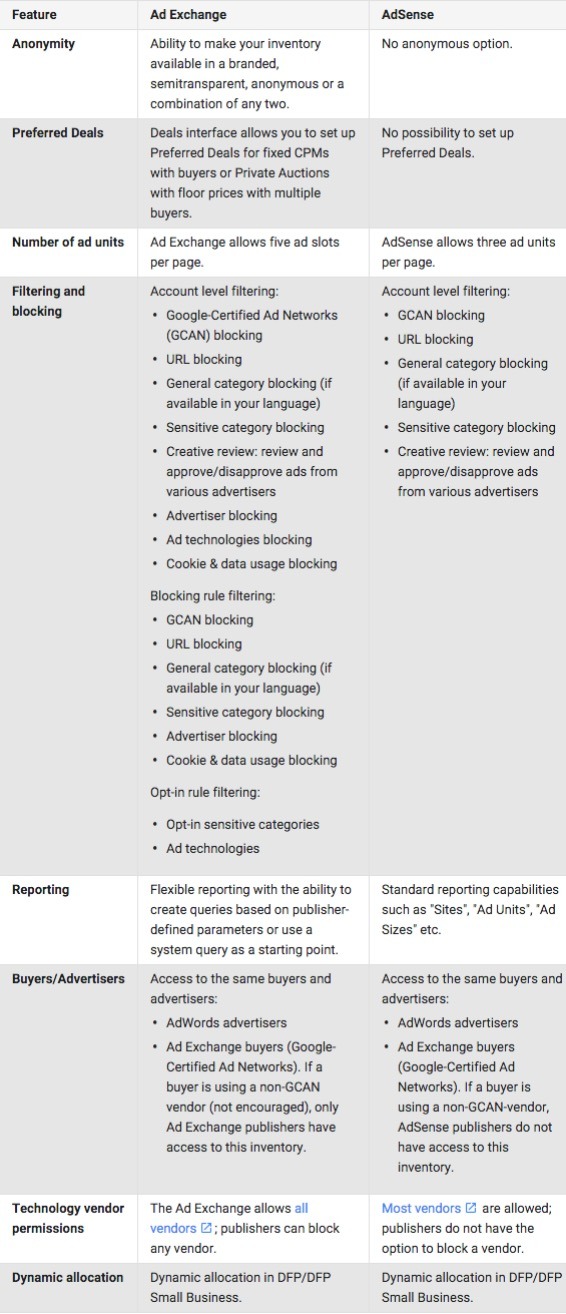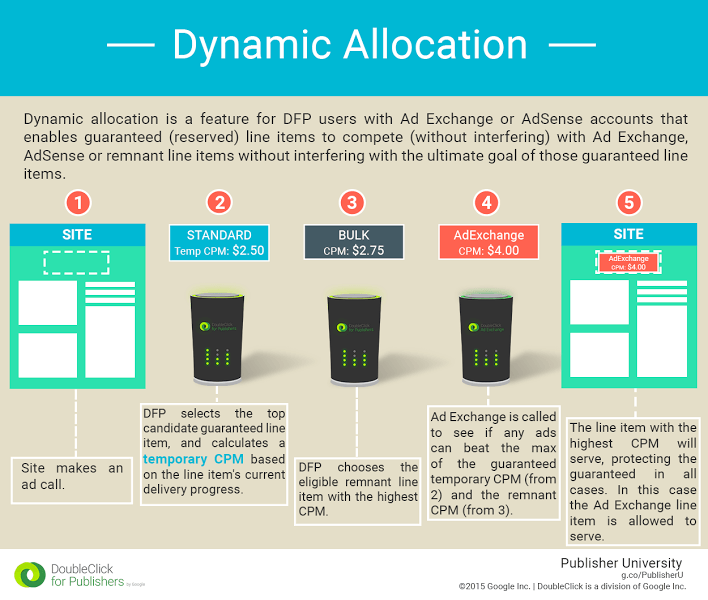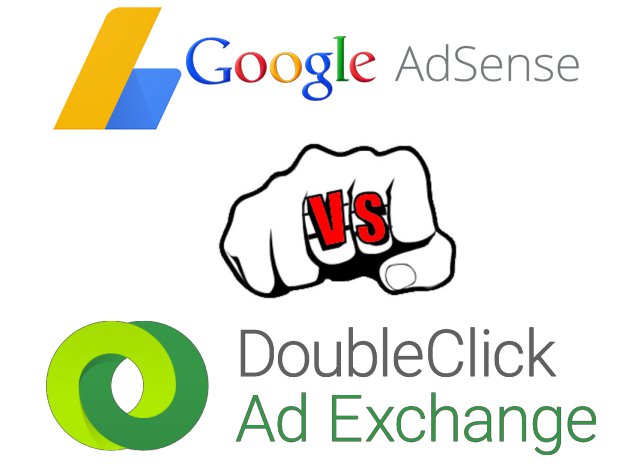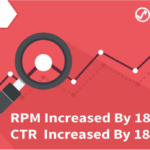Ad Network vs Ad Exchange: This article looks at some crucial difference between the two in general and at AdSense and AdX in particular.
Most web publishers are familiar with Google AdSense, in fact, it’s usually the first tool they turn to when they first decide to monetise their website with display ads.
AdSense is a great product. For the lack of a better way to put it: It just works. All you need to do is sign up, insert a verification code in your website, create ad units, and then place them at the appropriate locations on your site.
Of course, this may be a little bit of an oversimplification, there’s a lot of tweaking, experimentation, and optimisation that you’ll need to do in order to get the most out of AdSense… but setting is up is a pretty straightforward process.
However, AdSense is just one ad network and the ad ecosystem is pretty vast. And for those who’ve been around for a while, there are many lucrative options to consider. For the purpose of this post though, we’ll keep the conversation limited to ad exchanges.
Maybe you’ve heard of ad exchanges before in passing, maybe you haven’t, that’s okay, we’re going to discuss what exactly an ad exchange means, how they are different from ad networks, and which one is right for you.
Also, since there are both countless ad networks and ad exchanges, and speaking about them only in generalities will not help, we’re going to look at two products: Google AdSense (the ad network) and Google DoubleClick Ad Exchange (the ad exchange).
How They Work: AdSense vs. AdX
As previously discussed, Google AdSense is an advertising network that allows web publishers to monetise their website and mobile assets. It’s appeal lies in its simplicity. Setup is easy, and once set up, it requires minimal interference from the webmaster to run. With a fill rate between 95% and 99%, your ad units will almost never turn up empty. AdSense includes ads displayed in search engine results, Google products, and the Google Display Network (GDN). As an ad network, it has a very wide reach and allows for excellent targeting.
Google Ad Exchange (also simply knows as AdX) is a completely different beast entirely. It’s a programmatic RTB exchange that connects ad networks, agencies, and third-party demand-side platforms with a vast global inventory in real-time. It’s best suited to relatively large publishers who require more granular control over their ad setup. Broadly speaking, it expands your horizons by giving you more options and control. It allows publishers to sell their inventory directly and is also a great option for established brands and e-commerce players who have a lot of quality traffic.
Google provides a detailed table of differences between the two products:

Let’s Talk About Money
One of the reasons, if not the primary reason why you may be considering shifting from an ad network like AdSense to an exchange like AdX is probably that you’d like to better monetize your inventory and generate higher revenue. Hold that thought.
Although AdSense buys all the inventory offered to it by the publisher, pricing it according to the bids set by the advertiser for each ad, campaign, and keyword. This pricing system works according to Google’s algorithm, so you will never be able to manually set the floor price for your ads, although you can try to optimise your setup for better performance by A/B testing and be following best practices (which you should).
On the other hand, AdX is like a townhall where many players including agencies, brands, networks, and direct buyers get together to buy your inventory via a live auction. Moreover, you can set your own floor prices. It sounds like the perfect storm, doesn’t it? But wait, it’s not that simple. If you set your floor price too high, buyers may just lose interest in your inventory… which obviously means that your revenue will probably take a steep dive. To sum it up, the potential to make more money does exist with AdX, but so does the potential to lose money if you don’t get it just right.
With AdSense, the revenue share is set in stone. You, the publisher, gets to keep 68% of the revenue while Google keeps 32% for their service. With search ads, this number actually goes down to 51% for the publisher. Contrary to this, with AdX, you may be able to negotiate the revenue, but there’s a rider. You have to be a large enough publisher on their radar with a dedicated account manager to be able to strike such an arrangement. In case you are, the additional money in terms of revenue share can really ad up even if the change in percentage is minor because the volume is huge.
Operational Considerations
If you were to draw an analogy between AdSense and AdX, you could say that AdSense is like iOS and AdX is like Android. Its not the perfect analogy but it’s aimed to show that while the former provides a more seamless and streamlined experience to the end user, the latter gives you more power to control and customise.
AdX definitely does have a few distinct advantages over AdSense, for one, it provides enhanced blocking options to prevent inventory cannibalisation and to stop competing brands from advertising on your website. There’s also a dynamic allocation feature that allows AdSense to show ads when it can offer a higher CPM than your other ad networks, ensuring you get the highest price for each ad impression.

As you may have guessed by now, AdX requires a lot more day-to-day operational attention and maintenance compared to AdSense. The learning curve is also relatively steeper as you will need to spend time learning the terminology, process, and optimisation hacks to get the most out of your account. Ideally, you would need a dedicated ad ops team, or at least a dedicated person, to manage the setup.
For those who require this level of control and have the wherewithal to run such an operation, the advantages are many. So it’s really a question of whether or not the tradeoff works in your particular case.
If your ads perform well on AdX, advertisers will want more of that action. In such a case, you can reach out to them directly and negotiate a better price for yourself by offering premium placements while selling the remnant inventory through AdX and other ad exchanges. This is something you just can’t do with AdSense.
Bottomline? If you have the time, expertise, and connections needed to efficiently run AdX, then you should. Otherwise you may just find yourself making less money from it.
Maximum Ad Units Allowed
Another crucial difference between AdSense and AdX lies in the number of ad units they allow publishers to serve on their website.
- While AdSense limits ads to three units per webpage, AdX allows up to five.
This is especially beneficial if you have pages that tend to be longer than average. Logic suggests that this means you will potentially generate more revenue because the higher the number of ads, the higher the chances that a user will be invested in one of them.
However, that’s not always the case. - At the end of the day, users don’t really like ads.
The general tendency is to view them as an annoyance, which is why the adoption of ad blockers has grown at the manic rate that it has over the last few years. Too many ads may clutter your page and damage your UX, meaning that your RPV (revenue per visitor) will probably take a hit. Not to mention increased site abandonment.
It’s a delicate balance you need to strike. In fact, if you optimise your ad setup well, then you may just earn more with three ads instead of five. - It’s not wise to assume that more ads units will necessarily translate to higher revenue, although it’s worth trying.
Also, if you’re using AdX to serve ads from AdSense, you will still be limited to displaying three ads because that’s the limit AdSense follows irrespective of the capabilities of AdX, for the other two units – you will have to connect another source.
Conclusion
By now, you probably have a good understanding of how AdSense and AdX work and also the general ways in which ad networks and ad exchanges differ.
So should you move to AdX or stay with AdSense? Well, it depends. The first thing it depends on is whether your application to join even gets accepted. Once you’re through that hurdle, your success will depend on your size, advertisers, and technical expertise, among other factors. It’s worth a shot though, you don’t stand to lose much, if it doesn’t work – you can always switch back to AdSense without any significant losses.
FAQs
Ad networks collect ad inventory from publishers and sell it to advertisers. It serves as an intermediary. Ad exchanges are digital marketplaces where advertisers and publishers trade ad inventory directly. There is no intermediary involved in ad exchanges.
Advertisers and publishers can buy and sell advertising space on an ad exchange through real-time auctions. Display, video, and mobile ads are most commonly sold through them.
An advertising network assists publishers in monetization, controls fill rate, optimizes yield, and transacts media buys. In addition to managing advertising campaigns and reporting results, ad servers perform all other essential functions.

Shubham is a digital marketer with rich experience working in the advertisement technology industry. He has vast experience in the programmatic industry, driving business strategy and scaling functions including but not limited to growth and marketing, Operations, process optimization, and Sales.







